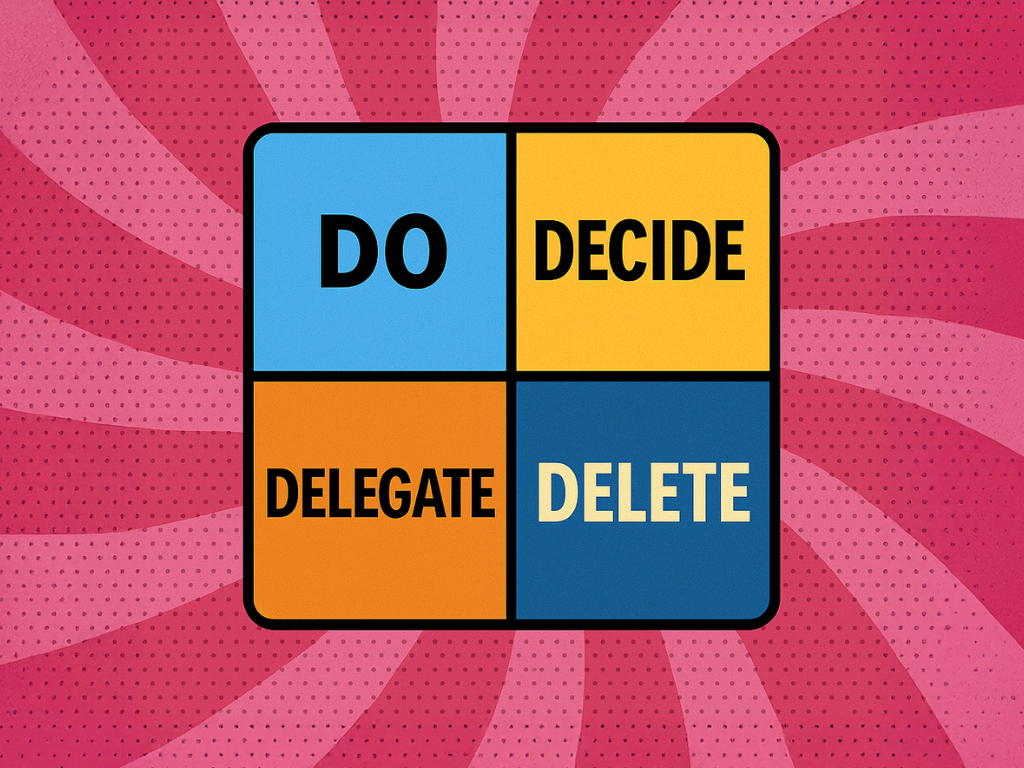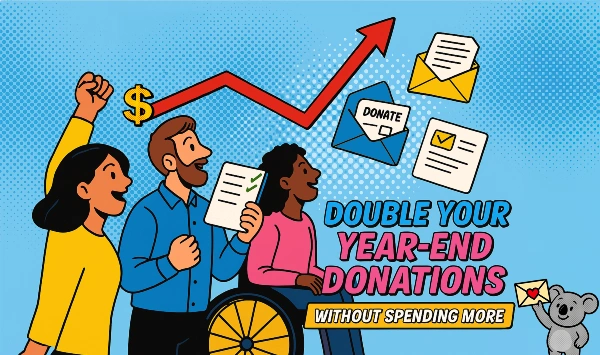At Moceanic, we frequently ask our members what they need most for their work as fundraising professionals.
Consistently, through the years, the top answer is this: I need more time to do all the things I have to do!
Nonprofit organizations are notoriously under-staffed. Many bosses don’t have experience creating and staffing fundraising groups, and that can leave people wearing way too many hats.
This is why a lot of us are constantly overwhelmed, struggling to catch up.
There’s not an easy or quick fix. But there’s a tool that can really help. It works for me, and for many people I know.
It’s a time management tool called the “Eisenhower Matrix.”
It was developed by US President Dwight D. Eisenhower. Before he became President, he served as a general in the United States Army and as the Allied Forces Supreme Commander during World War II. He also later became NATO’s first supreme commander. It would be safe to say that Eisenhower had a lot on his plate for a long time!
The Eisenhower Matrix is built on an important principle that is often overlooked: What is important is seldom urgent and what is urgent is seldom important.
In recognition of this universal truth, the Matrix boldly encourages you to acknowledge this fact and build your days around it. It helps you divide your tasks into quadrants by their urgency and by their importance. It looks like this:
Quadrant 1: Important and urgent. Emergencies and other non-negotiables that you must deal with now. This quadrant takes care of itself.
The operational word for this quadrant: Do these things.
Quadrant 2: Important and not urgent. Things like planning, thinking, personal development, and other forward-looking activities. These are truly important. They are what will help achieve your greatness. These are also things it is easy to neglect, because of the urgent things that call to you from the first and third quadrants. And the pain of neglecting these non-urgent important things is seldom immediate.
The operational word for this quadrant: Decide — you have to decide to do these things, to schedule them and defend your schedule to make them happen.
Quadrant 3: Urgent but not important. Emails, phone calls, fake emergencies. These are the things that are sucking away at your productivity. Their urgency crowds them onto your daily schedule, and many people (including you) may have trouble telling the difference between Quadrant 3 and Quadrant 1 tasks. You have to learn to say no — or find a way to delegate them to others.
The operational word for this quadrant: Delegate. I know that’s easier said than done, but make it a priority. Another possible word for this quadrant: Delay. A surprising number of these things dissolve away when you delay doing them.
Quadrant 4: Not important and not urgent. These unnecessary and time-wasting things are easy to get rid of, but sadly, they find their way into our days all too often. By recognizing that they are not important, you can avoid them.
The operational word for this quadrant: Delete. Seriously. You might be surprised how many of these tasks will melt away into nothingness if you think about them this way.
How to use the matrix
List the tasks you are facing by quadrant. You can do this as a sort of general “time audit,” but it will have more impact if you do it regularly — once a week or even daily. Then strategize how you will spend your time. And what you Must do, what you must decide, what you can delegate (or delay) and what you should delete.
You might be surprised how much of a difference this can make for you.
Your most important task is to spend as much time in Quadrant #2 as you possibly can, and spend little or no time in quadrants #3 and #4. (Don’t worry about Quadrant #1. It will take care of itself.) That’s the secret to success. In fundraising and in life.
Here are some additional ways to get the most from your Eisenhower Matrix:
- Limit yourself to eight or fewer tasks per quadrant. Avoid adding new tasks until you’ve completed previous tasks. Don’t let tasks pile up in your quadrants, because that will make this whole exercise much less effective.
- Use the same list for both your professional and private tasks. You are one person, not two! You have one bucket of time to work with.
- Stand up for your Quadrant #2 priorities. You are the only one you can depend on to do this – unless you have the most amazing manager in all history!
- Be aware that doing this may cause friction with other people. Be kind and be diplomatic. Try to get others using the Matrix too. It will transform their lives, and they will be far more understanding with you.
- Procrastination is your enemy. It’s what pushes you into the low-importance categories. Watch yourself for signs of procrastination.
One of the best ways to maximize your Quadrant #2 time is to deepen your knowledge and confidence about fundraising. One of the best ways to do that? Join The Fundraisingology Lab waitlist for access to these powerful resources – and discover how to work smarter, reduce stress, and keep your donors coming back.
Please share your experience by leaving your reply below. We’d love to learn from your experience.











